11 places to go summer bird watching around the Bay
Thanks to the diverse habitat found around Buzzards Bay — from freshwater river, to salt marsh, to sand dunes and exposed ocean beaches — Southeastern Massachusetts is a haven for those looking to spot a variety of avian species. This is especially the case in the summer, when local standbys are joined by migratory visitors come to feed, breed, and fill the air with new sounds and songs.
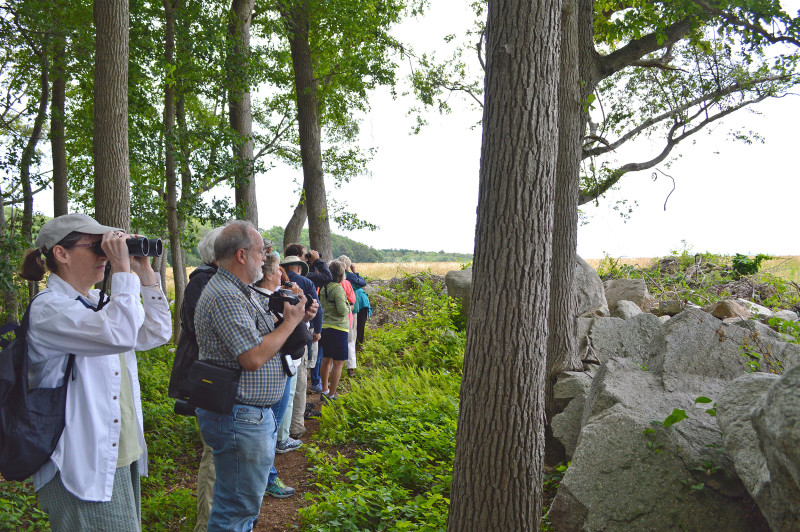 Even if you don’t know a finch from a flycatcher, the diversity hosted by Southeastern Massachusetts makes bird watching easy for anyone. Binoculars and an early morning start are a good way to maximize your potential sightings, but they’re not a requirement — if you have twenty minutes, an open ear, and an eye out for the flash of a wing, you can go bird watching!
Even if you don’t know a finch from a flycatcher, the diversity hosted by Southeastern Massachusetts makes bird watching easy for anyone. Binoculars and an early morning start are a good way to maximize your potential sightings, but they’re not a requirement — if you have twenty minutes, an open ear, and an eye out for the flash of a wing, you can go bird watching!
Here are 11 places to birdwatching around Southeastern Massachusetts this summer, and some of the winged creatures you might spot while doing so.
1. Gooseberry Island (Westport)
Jutting out from Horseneck Beach State Reservation into the mouth of Buzzards Bay, Gooseberry Island is a hotspot for bird watchers, with one of the highest counts of different species recorded in the region. Because of its position in Buzzards Bay, Gooseberry is a thoroughfare for migratory shorebirds, including gulls, sandpipers, cormorants, and terns, including the beautiful endangered roseate tern. Piping plovers, another protected species, also nest on this beach, so walkers are advised to keep away from marked areas.
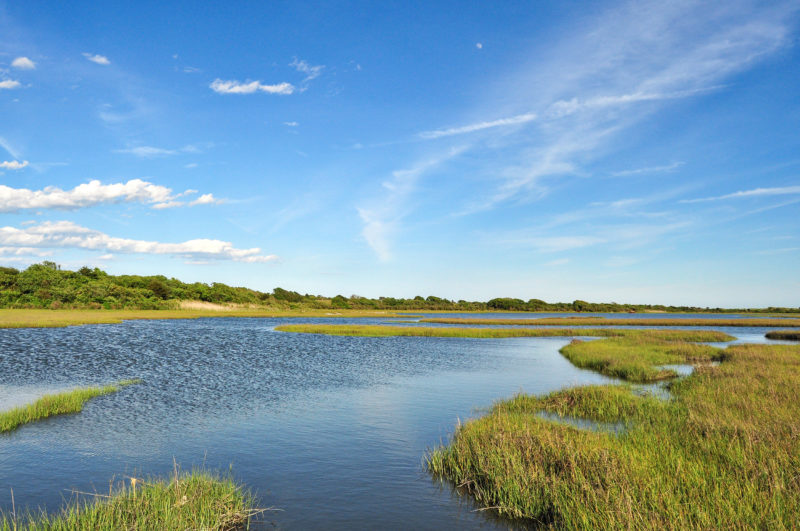
Dartmouth’s magnificent Allens Pond is one of the most significant coastal habitats in southern New England.
2. Allens Pond Wildlife Sanctuary (Dartmouth)
Allens Pond’s peaceful shores and surrounding woods are a magnet for birds and the birders that love to seek them out. Egrets and herons hide in the pond’s salt marshes, while sparrows and songbirds flit through the fields and meadows by the Stone Barn Farm. In summer, dozens of nesting ospreys raise their chicks on platforms around the sanctuary, and can be seen executing daring dives into the water in pursuit of fish.
3. Demarest Lloyd State Park (Dartmouth)
The shoreline and salt marshes in this gorgeous coastal park attract a variety of large coastal birds, including raptors like turkey vulture and osprey, graceful egrets, and herons. But Demarest Lloyd’s wooded trails also offer a home for cheery songbirds, including swallows, thrushes, warblers and sparrows, and migratory birds like Baltimore Orioles and American goldfinches — both easy to spot with their bright yellow plumage!
4. Southeastern Massachusetts Bioreserve (Freetown/Fall River)
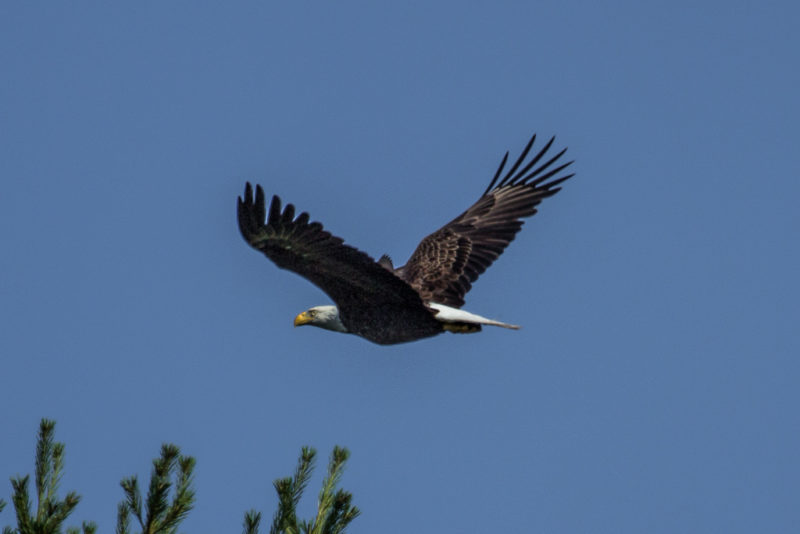
Look for mature bald eagles soaring over Watuppa Pond in Fall River. (Image: lapre93/Flickr)
The number of species you may see or hear in this state forest is as high as the Southeastern Massachusetts Bioreserve is vast. This sweep of forests, streams, and wetlands is one of the largest unfragmented forests in eastern Massachusetts, and it hosts a rich array of bird life as a result. Look for the flash of bright red scarlet tanagers and the multicolored, polka-dot displays of the Northern flicker. Listen for the distinctive trilling songs of hermit thrush, as well as the pecking of enormous hunting red-and-white pileated woodpeckers — the largest remaining woodpecker in North America, and a species that is beginning to recover from two centuries of depletion. Finally, bird watching in the Bioreserve wouldn’t be complete without a visit to Watuppa Reservation, where a pair of majestic bald eagles nest each year next to Watuppa Pond.
5. New Boston Trail (Fairhaven)
Branching out from the southwestern edge of the Mattapoisett River Reserve, the newly opened New Boston trail is a beautiful little place to escape from the bustle of New Bedford and Fairhaven just minutes away. Walking beneath a canopy of beech trees, listen for the calls of numerous songbirds, from common cardinals and robins to migrating orioles and Eastern bluebirds.
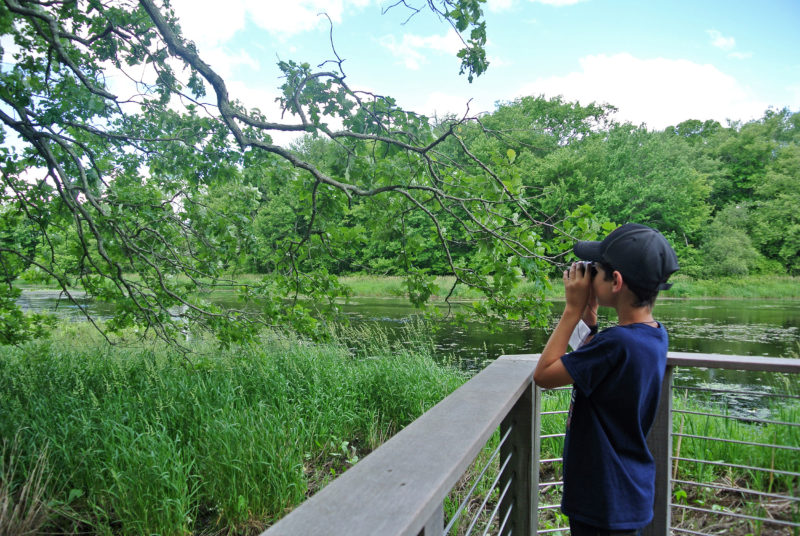
The river platforms at the Sawmill are a great place to look out for birds.
6. The Sawmill (Acushnet)
Restored by the Coalition in 2014, this former lumber yard sits at the head of the Acushnet River, and numerous birds attracted to its fresh water and rich green marshes. Graceful swans and feisty red-winged blackbirds are year-round highlights at the Sawmill, but summer also sees the appearance of flashy visitors like striking red-breasted grosbeak, bright yellow warblers, and singing warbling vireo.
7. Nasketucket Bay State Reservation (Mattapoisett)
The trails at Nasketucket Bay State Reservation start in the woods and wind their way through grassy meadows and salt marshes down to the shores of Nasketucket Bay, and the birds you can see here are just as varying. Little songbirds like the bright blue indigo bunting and striking Baltimore oriole can be found here, as can large hunting raptors like osprey and hawks. Snowy egrets and graceful glossy ibis frequent the salt marshes, while spotted sandpiper, greater yellowlegs and other shorebirds lope through the surf.
8. Little Harbor Beach (Wareham)
The sandy shores of Little Harbor Beach are a great place to spot shorebirds. Graceful terns dive over these protected waters alongside gulls of every sort, hunting osprey, and swimming cormorants, while sandpipers and even rare piping plovers run up and down with the passing waves. Watch for long enough and you may even see a belted kingfisher, with its spunky blue-gray crest, diving into the waves for a fish.
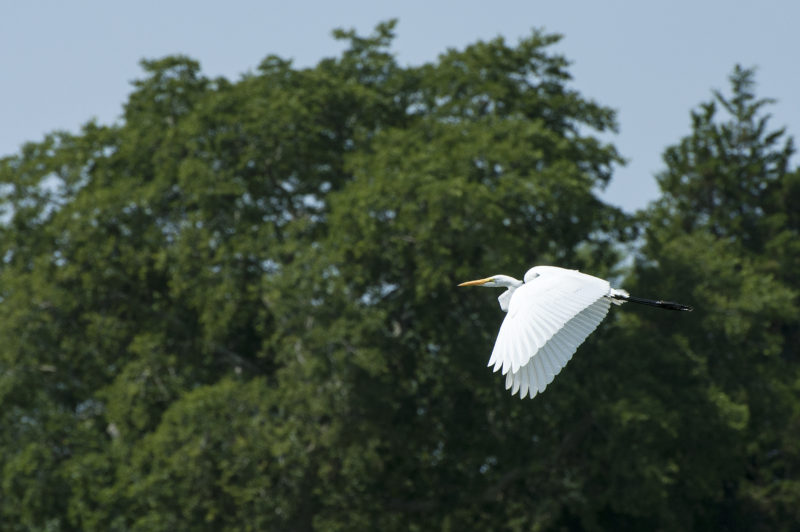
A great egret on the wing.
9. Lyman Reserve (Plymouth)
Woods, wetlands and shoreline are nestled around a rare coldwater stream at Lyman Reserve, where migrating trout can still be found — and where herons, egrets and osprey might be seen diving in pursuit of them. Bright yellow American goldfinches are a common sight here, as are numerous other trilling songbirds in the summer months.
10. Wood Neck Beach (Falmouth)
Because sandy Wood Neck Beach sits at the mouth of Little Sippewisset Marsh, it’s a perfect site to look for a variety of birds attracted to the marsh’s fish and insect populations. Minutes after spotting a shorebird such as shearwaters, gulls and sandpipers, you might spot a loon or common eider, or a songbird such as a catbird or a goldfinch. Some observers have even seen hundreds of European starlings here forming the mesmerising, ever-shifting clouds known as “murmurations.”
11. Frances A. Crane Wildlife Management Area (Falmouth)
This peaceful spot just off busy Route 151 is a rare expanse of meadowland habitat, not often found on the developed Cape. Frances A. Crane‘s long sightlines also make it a superb spot for birding, making it possible to see feeding birds that would be hidden by trees and vegetation elsewhere. We recommend stopping by in the late afternoon or early evening before sunset, when dipping swallows fill the fields in pursuit of insects, soon joined by chirping bats as dusk falls.